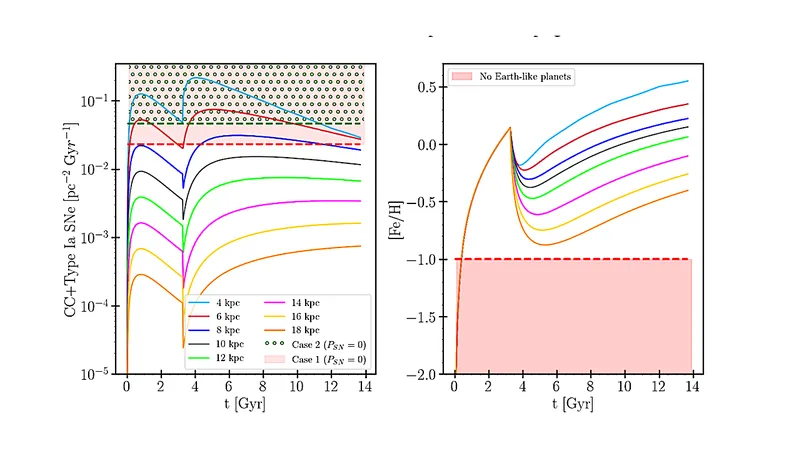
Unlocking the Secrets of the Galaxy: How Stellar Migration and Gas Giants Influence Planetary Habitability
2025-06-26
Author: Ming
The Quest for Earth-Like Worlds
In the ever-evolving field of exoplanet research, scientists are on a relentless quest to find planets that mirror Earth's density and potential for life. With the discovery of numerous rocky exoplanets, the spotlight is now shifting to the architectures of their star systems and the galactic environments that can nurture life, paralleling our own planetary conditions.
Revisiting the Galactic Habitable Zone (GHZ)
This renewed focus has breathed life into the concept of the Galactic Habitable Zone (GHZ), a theory that aims to explain the diverse environments of planets across the galaxy. Recent groundbreaking research has plumbed the depths of this theory, employing intricate chemical evolution models to assess how stellar migration affects the GHZ.
Stellar Migration: A Game Changer for Habitable Planets
The results are astonishing: stellar migration could dramatically boost the number of stars capable of hosting habitable planets in the outer reaches of the galaxy by as much as five times when compared to traditional models. At a distance of 18 kpc, this increase is starkly evident in contrast to the baseline figure of one at 6 kpc.
Gas Giants: Unlikely Allies in Planet Formation?
Further, the study unraveled an intriguing twist: the presence of gas giant planets may actually enhance the chances of terrestrial planet formation. This phenomenon is particularly pronounced in the inner Galactic disc, although stellar migration plays a role in balancing these effects.
Exciting Implications for Earth-Like Planet Formation
At present, the data suggests that the number of FGK stars—those with potential for Earth-like planets—located around a 4 kpc radius is approximately 1.4 times greater when gas giants are present, as opposed to scenarios where they inhibit the formation of rocky planets. Without considering stellar migration, this factor rises to 1.5, with predictions for terrestrial planets around retired A stars soaring to 2.8 with migration and 3.3 without.
What Lies Ahead in Astrobiology?
With these revelations, the future of astrobiology looks more vibrant than ever. As we deepen our understanding of the galaxy, who knows how many more Earth-like worlds await our discovery? Prepare for a cosmic journey that challenges everything we've thought we knew about life beyond our planet!


 Brasil (PT)
Brasil (PT)
 Canada (EN)
Canada (EN)
 Chile (ES)
Chile (ES)
 Česko (CS)
Česko (CS)
 대한민국 (KO)
대한민국 (KO)
 España (ES)
España (ES)
 France (FR)
France (FR)
 Hong Kong (EN)
Hong Kong (EN)
 Italia (IT)
Italia (IT)
 日本 (JA)
日本 (JA)
 Magyarország (HU)
Magyarország (HU)
 Norge (NO)
Norge (NO)
 Polska (PL)
Polska (PL)
 Schweiz (DE)
Schweiz (DE)
 Singapore (EN)
Singapore (EN)
 Sverige (SV)
Sverige (SV)
 Suomi (FI)
Suomi (FI)
 Türkiye (TR)
Türkiye (TR)
 الإمارات العربية المتحدة (AR)
الإمارات العربية المتحدة (AR)